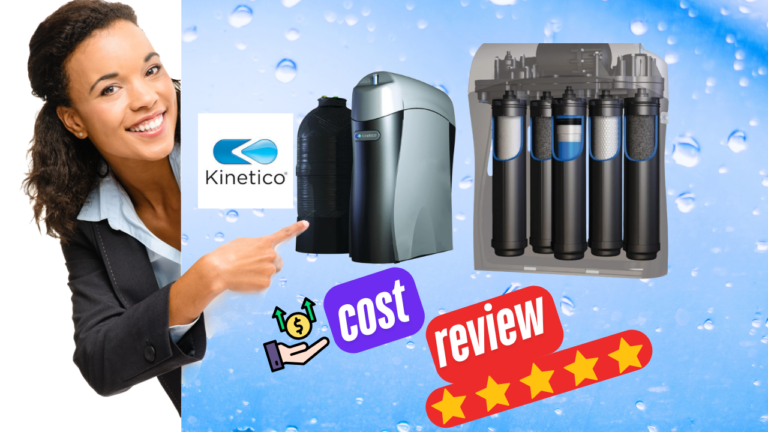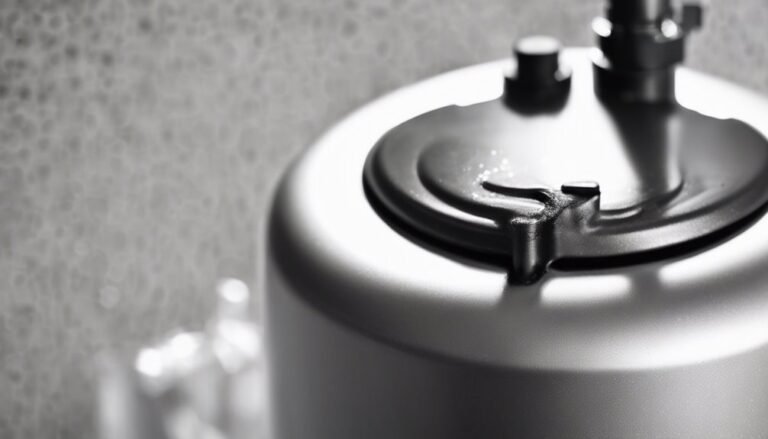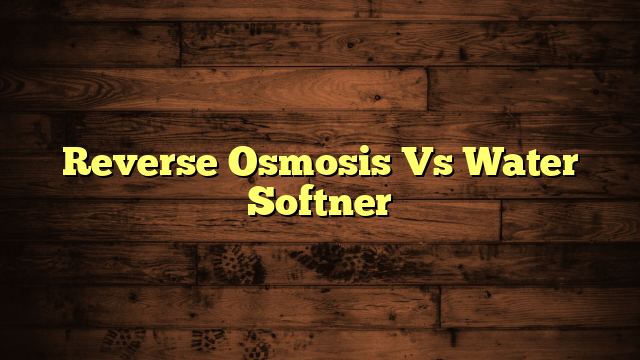The Cost of Culligan Water Softeners for Your Home
Have you ever wondered what price you'd pay for softened water? The cost of Culligan water softeners can range widely, influenced by factors like your household size and the hardness of your water. While you might anticipate a higher initial investment due to Culligan's reputation, it's important to contemplate the long-term savings that could come into play. However, don't forget to factor in installation, maintenance, and potential parts replacement. What other hidden costs might surprise you when you're evaluating this choice?
Key Takeaways
- Culligan water softeners range from a few hundred to several thousand dollars, depending on household size and water hardness.
- Installation costs vary; professional installation typically takes a few hours to a full day and may incur additional fees.
- Ongoing maintenance includes regular salt refills and annual inspections, with service fees typically between $75 and $150.
- Replacement parts, like resin beads and filters, can cost $100 to $150 and $20 to $50, respectively, impacting long-term budgeting.
- Financing options are available, offering flexible payment plans that can lead to significant long-term savings on utility bills and cleaning supplies.
Overview of Culligan Water Softeners
Culligan water softeners are designed to tackle hard water issues in your home. When you choose a Culligan system, you're investing in improved water quality that can make a significant difference in your daily life. Hard water can lead to scale buildup, affecting your plumbing, appliances, and even your skin and hair. By softening your water, Culligan helps to prevent these problems, enhancing the longevity of your fixtures and appliances.
One of the key Culligan benefits is the ability to customize your water softening system. With options ranging from portable exchanges to whole-house systems, you can select a solution that fits your specific needs. This flexibility means you'll enjoy consistent, soft water throughout your home, whether you're showering, washing dishes, or doing laundry.
Moreover, soft water can lead to noticeable improvements in cleaning efficiency. It helps soaps and detergents work better, so you end up using less while achieving cleaner results.
In addition, skin irritation often decreases, providing comfort for those with sensitive skin. Overall, Culligan water softeners are a smart choice for enhancing your home's water quality and providing lasting benefits.
Initial Purchase Costs
When considering a water softening system, you'll find that initial purchase costs can vary considerably based on the type and size of the unit you choose. Culligan offers a range of models, and prices typically start from a few hundred dollars and can go up to several thousand. The size of your household and the hardness of your water will heavily influence your decision.
When looking at different options, it's crucial to conduct brand comparisons. Culligan's reputation for quality might come with a higher price tag, but many customers value the longevity and performance of their systems.
Moreover, be sure to review warranty options, as these can greatly affect your overall cost. A longer warranty often indicates a manufacturer's confidence in their product, but it's vital to balance this with your budget.
Remember to factor in any extra features you might want, such as smart technology or advanced filtration systems, as these can also impact the initial purchase price.
Doing thorough research will help you find the best water softener that meets both your needs and your budget.
Installation Expenses
Installing a water softener involves more than just the purchase price; it's crucial to take into account installation expenses as well. When you decide to install a Culligan water softener, you'll need to evaluate various installation techniques that professionals use. Depending on your home's plumbing setup, these techniques can vary, impacting the overall cost.
The installation duration is also a critical factor. Typically, a professional installation can take anywhere from a few hours to a full day, depending on the complexity of your system and your existing plumbing.
If your home requires extensive modifications, such as additional plumbing work, expect the installation time and costs to increase.
You may choose to install the unit yourself to save money, but keep in mind that this option requires a certain level of skill and knowledge. If you're not comfortable with plumbing tasks, hiring a professional is usually the best choice, ensuring a proper setup and peak performance.
Don't forget to factor in any additional expenses, like permits or special equipment, as these can add to your overall installation costs.
Ongoing Maintenance Fees
When you invest in a Culligan water softener, ongoing maintenance fees are part of the package.
You'll need to plan for routine salt refills, annual inspections, and potential repair costs to keep everything running smoothly.
Understanding these expenses helps you budget effectively and guarantees your system continues to deliver soft water for years to come.
Routine Salt Refills
Maintaining a Culligan water softener involves regular salt refills, an essential aspect of ensuring peak performance. The type of salt you choose can impact both efficiency and cost, so understanding your options is vital. Generally, you'll encounter three main salt types: solar salt, rock salt, and evaporated salt. Each has unique benefits and varying refill frequency requirements.
Here's a quick overview of salt types and their refill frequency:
| Salt Type | Refill Frequency (Months) |
|---|---|
| Solar Salt | 1-2 |
| Rock Salt | 2-3 |
| Evaporated Salt | 1-2 |
You'll want to monitor your softener's salt levels regularly, as running low can compromise its effectiveness. Depending on your water quality and usage, you might find that some types need more frequent refills than others. So, check your softener's settings and your household's water consumption to create a refill schedule that works for you. Keeping up with salt refills not only enhances your water quality but also extends the lifespan of your Culligan water softener.
Annual Inspection Costs
Keeping your Culligan water softener in top shape goes beyond just regular salt refills. One key aspect of ongoing maintenance is the annual inspection. This proactive step can save you money in the long run, as it helps catch potential issues before they escalate.
During these inspections, trained professionals assess the system's performance, ensuring it operates efficiently and effectively.
The benefits of annual inspections are significant. They help prolong the life of your water softener, maintain water quality, and prevent costly repairs.
While the inspection frequency is typically once a year, some homeowners may choose to have it done more often, especially if they notice any changes in water quality or system performance.
Investing in annual inspections can provide peace of mind, knowing that your Culligan system is running smoothly. It's a small price to pay compared to the potential costs of neglect.
By staying on top of inspections, you can enjoy the full benefits of softened water, including improved taste and reduced scale buildup in your plumbing.
Don't overlook this vital aspect of your water softener maintenance—your home deserves the best!
Repair and Service Fees
Repair and service fees for your Culligan water softener can vary, but budgeting for ongoing maintenance is essential. Regular upkeep guarantees your system runs efficiently and lasts longer, saving you money in the long run.
Typically, you can expect to pay for a repair service if something goes wrong, such as a malfunctioning valve or a salt bridge. These services can range from $75 to $150, depending on the issue and your location.
To minimize these costs, consider some maintenance tips. Regularly check the salt levels and refill as needed, as low salt can lead to performance issues. Cleaning the brine tank annually can also prevent buildup and keep your system running smoothly.
It's also wise to schedule an annual inspection, which can catch potential problems before they escalate.
While repair and service fees can add up, maintaining your water softener is a worthwhile investment. By staying proactive with maintenance, you can avoid unexpected repair service costs and enjoy the benefits of softened water for years to come.
Prioritize these tasks, and your Culligan system will thank you with peak performance.
Cost of Replacement Parts
When it comes to maintaining your Culligan water softener, understanding the cost of replacement parts is essential.
You'll find that common components like resin tanks and control valves can wear out over time, impacting both performance and efficiency.
Knowing the average replacement costs can help you budget effectively and guarantee your system runs smoothly.
Common Replacement Components
Water softeners, like any household appliance, require occasional maintenance and replacement of parts to confirm peak performance.
When it comes to common replacement components, two of the most important are replacement filters and resin beads.
Replacement filters help to remove impurities and make sure clean water flows through your system. Depending on your usage and water quality, you'll need to change these filters regularly. Ignoring them can lead to reduced efficiency, which means you won't enjoy the full benefits of softened water.
Resin beads, on the other hand, are essential for the ion-exchange process that softens water. Over time, these beads can become saturated and lose their effectiveness. When this happens, you'll need to replace them to maintain ideal performance.
While you can manage some of these replacements yourself, it's crucial to consult your user manual for guidance. Some components might require professional assistance, especially if you're unsure about handling them.
Keeping an eye on these common components makes sure your water softener runs efficiently and prolongs its lifespan, helping you avoid costly repairs down the line.
Average Replacement Costs
Understanding the average replacement costs for water softener parts can help you budget for maintenance and avoid unexpected expenses. Typically, you'll need to replace components like resin beads, filters, and the brine tank over time.
Resin beads usually last about 10 to 15 years, while filters might need changing every 6 to 12 months, depending on your water quality and usage.
The costs for these replacements can vary. For example, resin beads can set you back around $100 to $150 for a full replacement. Filters are generally more affordable, usually costing between $20 to $50 each.
If your softener has a brine tank, expect a replacement cost of about $50 to $100.
It's also important to evaluate warranty coverage. Many Culligan water softeners come with warranties that can cover parts for several years, potentially saving you money.
Always check the specifics of your warranty; it can impact your overall maintenance budget greatly. By staying informed about replacement frequency and costs, you'll be better prepared, ensuring your water softener runs efficiently for years to come.
Comparing Financing Options
While exploring financing options for Culligan water softeners, you'll find various plans that cater to different budgets and needs. Many homeowners appreciate the flexibility offered by these financing options, which can range from low monthly payments to longer-term agreements.
Depending on your financial situation, you might consider choosing a payment plan that fits seamlessly into your monthly expenses. You can often find promotional offers that allow for deferred payments or interest-free financing for a limited time. This can be particularly helpful if you're looking to manage cash flow while investing in a quality water softener.
Moreover, some financing options may include extended warranties or maintenance packages, providing added value and peace of mind.
It's essential to compare the terms and conditions of each financing option carefully. Look out for interest rates, monthly payment amounts, and any hidden fees that could affect your overall costs.
By understanding the different payment plans available, you can select the one that best aligns with your financial goals, ensuring you get the most out of your investment in a Culligan water softener.
Take your time and choose wisely—it'll pay off in the long run!
Long-term Savings Analysis
When you consider the long-term savings of investing in a Culligan water softener, it becomes clear how this choice can impact your wallet over time. One of the significant long term benefits is the reduction in your household's energy costs. Hard water can cause mineral buildup in appliances like dishwashers and water heaters, forcing them to work harder and consume more energy.
By softening your water, you help these appliances run efficiently, leading to noticeable cost savings on your utility bills.
Moreover, soft water can extend the lifespan of your plumbing and appliances, reducing the need for expensive repairs or replacements. You'll also notice lower costs for cleaning supplies since soft water improves the effectiveness of soaps and detergents. This means you can use less product while achieving better results, translating to extra savings.
Lastly, consider the potential increase in your home's value. Homebuyers often appreciate a well-maintained system, making your investment even more worthwhile.
Frequently Asked Questions
Do Culligan Water Softeners Require Special Plumbing Modifications?
Plumbing puzzles can present installation challenges, but Culligan water softeners typically don't require significant modifications. You'll need to check your current plumbing requirements, ensuring a smooth installation without too many headaches. It's usually straightforward!
Can I Install a Culligan Water Softener Myself?
You can install a Culligan water softener yourself, but it's crucial to follow the installation process carefully. Check for DIY tips online to guarantee you've got everything covered for a successful setup without professional help.
What Is the Average Lifespan of a Culligan Water Softener?
The average lifespan of a Culligan water softener is around 10 to 15 years. Regular water softener maintenance, like checking resin and salt levels, can greatly impact lifespan factors, ensuring your system runs efficiently longer.
Are There Any Energy Costs Associated With Culligan Water Softeners?
Like a car on a smooth highway, Culligan water softeners can optimize operational efficiency, but they do have energy consumption. You'll notice a minimal increase in your bills, depending on usage and model efficiency.
How Do I Know Which Model Is Best for My Home?
To find the best model for your home, assess your water hardness and household size. Consider how much water your family uses daily, as this affects which water softener will meet your needs effectively.
Conclusion
Investing in a Culligan water softener isn't just a purchase; it's a ticket to a life where your appliances last longer, your skin feels softer, and those pesky mineral stains vanish like magic. Sure, the initial costs might seem intimidating, but think of it as planting a money tree that flourishes over time. With the right care, you won't just save on utilities and maintenance; you'll revel in the luxury of clean, soft water that transforms your home.







